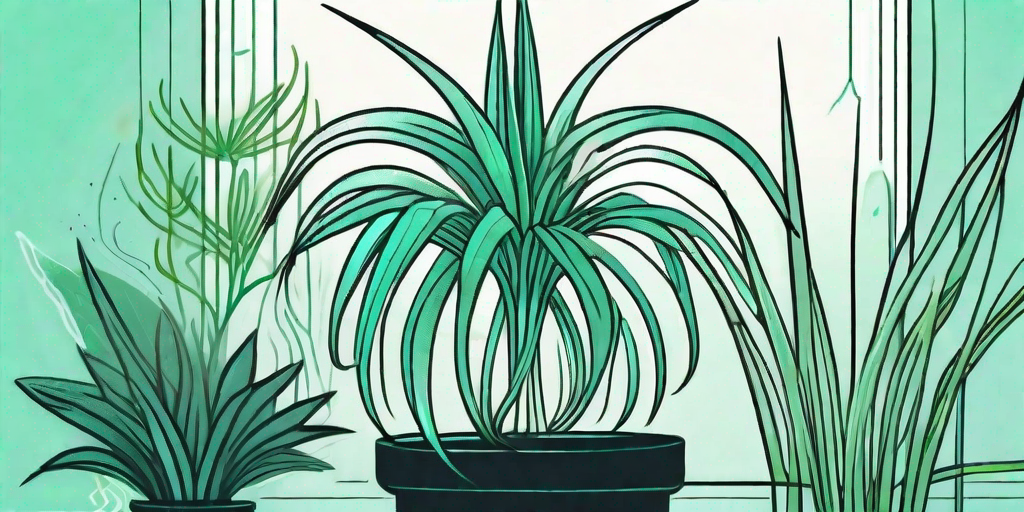
Welcome, dear green-thumbed reader, to the mysterious world of Spider Plant roots. These humble roots, often overlooked in favor of their leafy counterparts, are the unsung heroes of the plant world. They are the silent workers, toiling away beneath the surface, ensuring the survival and prosperity of the Spider Plant. So, let's dive beneath the soil and uncover the secret life of these fascinating roots.
The Basics of Spider Plant Roots
Before we delve into the nitty-gritty, it's important to understand the basics. Spider Plant roots, like all plant roots, have two main functions: to anchor the plant in the soil and to absorb water and nutrients. But there's more to these roots than meets the eye. They are also responsible for storing food and producing hormones that regulate plant growth. Now, isn't that something?
Spider Plants, scientifically known as Chlorophytum comosum, are native to tropical and southern Africa. They are popular houseplants due to their hardiness and easy care. But don't let their easy-going nature fool you. These plants have a complex and intriguing root system that is worth exploring.
Types of Spider Plant Roots
Spider Plants have two types of roots: primary and secondary. The primary roots are the first to emerge from the seed and grow directly downward into the soil. These roots are thick and strong, providing the main anchor for the plant.
Secondary roots, on the other hand, branch off from the primary roots. They are thinner and spread out in all directions, creating a network of roots that can efficiently absorb water and nutrients from the soil. These roots also have tiny root hairs that increase the surface area for absorption.
How to Care for Spider Plant Roots
Now that we've covered the basics, let's get down to business. How do you care for these roots? Well, it's not as complicated as you might think. In fact, it's quite simple. All you need is a little knowledge, a little patience, and a whole lot of love.
First and foremost, Spider Plants prefer well-draining soil. This prevents water from pooling around the roots, which can lead to root rot. A good potting mix for Spider Plants is one that contains equal parts of peat moss, loam, and sharp sand. This mix provides good drainage while also retaining enough moisture for the roots.
Watering
When it comes to watering, Spider Plants are quite forgiving. They can tolerate periods of drought, but they prefer a good drink now and then. The key is to water thoroughly, allowing the water to drain out of the bottom of the pot, and then let the soil dry out slightly before watering again.
Overwatering can lead to root rot, a deadly disease that can kill your plant. So, it's better to err on the side of caution and underwater rather than overwater. Remember, Spider Plants are tough cookies. They can handle a little neglect.
Feeding
Spider Plants are not heavy feeders, but they do appreciate a little snack every now and then. A balanced liquid fertilizer applied once a month during the growing season should suffice. But be careful not to overfeed, as this can lead to salt buildup in the soil, which can damage the roots.
And there you have it. With these simple care tips, your Spider Plant roots should thrive, providing a strong foundation for a healthy and happy plant.
The Fascinating World of Spider Plant Propagation
One of the most exciting aspects of Spider Plants is their unique method of propagation. These plants produce baby plants, or "spiderettes", on long, arching stems. These spiderettes can be easily rooted to produce new plants. But what role do the roots play in this process? Let's find out.
When a spiderette comes into contact with the soil, it begins to produce roots. These roots anchor the spiderette to the soil and start absorbing water and nutrients. Once the roots are established, the spiderette can be cut from the parent plant and potted up as a new plant.
How to Root Spiderettes
Rooting spiderettes is a fun and easy way to propagate Spider Plants. Here's how to do it:
- Choose a healthy spiderette that has begun to produce roots.
- Fill a small pot with well-draining potting mix.
- Place the spiderette on the surface of the soil, ensuring that the roots are in contact with the soil.
- Water thoroughly and place the pot in a bright, indirect light.
- Keep the soil moist but not waterlogged.
- After a few weeks, the spiderette should have produced a strong root system and can be treated as a mature plant.
FAQs
Why are my Spider Plant's roots turning black?
Black roots are often a sign of root rot, a disease caused by overwatering. If you notice black roots, remove the plant from the pot and cut off the affected roots. Repot the plant in fresh, well-draining soil and be careful not to overwater in the future.
Can Spider Plants survive without roots?
While Spider Plants are hardy, they cannot survive without roots. The roots are essential for absorbing water and nutrients, anchoring the plant, and storing food. Without roots, the plant would die.
How deep do Spider Plant roots grow?
Spider Plant roots can grow quite deep if given the chance. In a pot, the roots will grow to the bottom and then spread out. In the ground, the roots can grow several feet deep.
Conclusion
And there you have it, the secret life of Spider Plant roots uncovered. These roots may be hidden beneath the soil, but they play a crucial role in the life of the plant. They are the unsung heroes, working tirelessly to ensure the survival and prosperity of the Spider Plant.
So, the next time you water your Spider Plant, spare a thought for the roots. They may be out of sight, but they should never be out of mind. After all, without them, there would be no Spider Plant.















